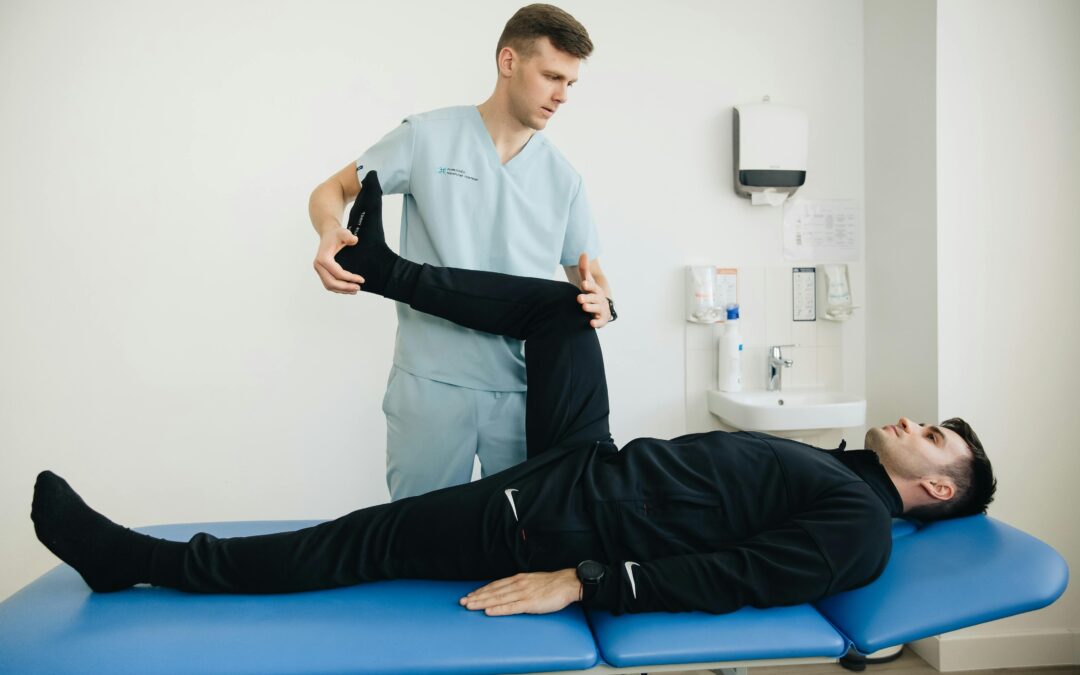Ankle sprains are one of the most common injuries, particularly among athletes and anyone with an active lifestyle. They occur when the foot twists or rolls beyond its normal range of motion, causing the ligaments that support the ankle bones to stretch or tear. Though it’s a relatively mild injury, if you’ve experienced an ankle sprain, you know how painful and debilitating it still can be. However, with proper treatment, including physical therapy, you can recover fully and get back to your daily activities.
An ankle sprain occurs when the ligaments, which are the strong bands of tissue that connect the bones in your ankle, are stretched or torn. This usually happens when the foot is planted unevenly on a surface, causing the ankle to roll inward or outward beyond its normal range of motion. Most ankle sprains happen during activities that involve quick shifting movements, such as playing sports or walking on an uneven surface.
Common Symptoms of an Ankle Sprain
The symptoms of an ankle sprain can vary depending on the severity of the injury. Common symptoms include:
Pain: This typically occurs immediately at the site of the sprain and can range from mild discomfort to severe pain.
Swelling: The ankle will usually swell within a few hours of the injury.
Bruising: Bruising may appear around the ankle, sometimes extending to the foot.
Tenderness: The area around the ankle may be tender to the touch.
Difficulty Walking: In more severe sprains, it may be difficult or impossible to put weight on the affected foot.
How Physical Therapy Can Help Heal an Ankle Sprain
The goal of physical therapy in treating an ankle sprain is to restore function, improve mobility, and prevent further injury. Without proper rehabilitation, a sprained ankle can lead to chronic issues such as persistent pain, swelling, and joint instability. Here are the typical physical therapy treatments for an ankle sprain:
Rest, Ice, Compression, and Elevation (RICE)
The first step in treating an ankle sprain is to reduce pain and swelling. The RICE (rest, ice, compression, and elevation) method is often recommended in the first 24-48 hours after the injury.
Range-of-Motion and Muscle Strengthening Exercises
Once the initial swelling and pain have subsided, your physical therapist may guide you through exercises designed to improve the range of motion in your ankle and strengthen the surrounding muscles. These exercises may include ankle circles, toe curls, and resistance band exercises.
Body Awareness and Balance Training
Balance training can be crucial for preventing future ankle sprains. Your physical therapist will guide you through exercises that help your muscles respond more effectively to changes in your environment, such as walking on uneven surfaces. This training helps to re-establish the body’s proprioception, which is your sense of joint position.
Functional and Activity-Specific Training
As you progress in your recovery, your physical therapist will incorporate exercises that mimic the activities you were doing before your injury. For example, if you sprained your ankle while playing a sport, your therapist may include sport-specific drills to help you regain confidence and function.
Manual therapy involves hands-on techniques to help restore normal joint mobility. This may include joint mobilization, soft tissue massage, and stretching. Manual therapy can help reduce pain, improve range of motion, and promote healing.
To protect the ankle during recovery, your physical therapist may recommend using tape, bandages, or an ankle brace. These devices provide additional support to the joint and help prevent re-injury during the healing process.
Modalities to Treat Pain and Swelling
Physical therapists use various modalities to manage pain and reduce swelling. These may include ultrasound, electrical stimulation, and ice. One particularly effective modality for treating ankle sprains is iontophoresis with dexamethasone.
Iontophoresis with Dexamethasone: An Innovative Treatment Option
Iontophoresis is a non-invasive therapy that uses a mild electrical current to deliver medication through the skin and into deeper tissues. The process involves applying a negatively- or positively-charged electrical current to a medicated solution with the same polarity. This current pushes the medication deep into the tissues, directly targeting the injured area.
How Does Iontophoresis Work in Physical Therapy?
In physical therapy, iontophoresis is used to deliver anti-inflammatory medications, such as dexamethasone, directly to the site of injury. Dexamethasone is a corticosteroid that reduces inflammation and pain, making it an ideal treatment for conditions like ankle sprains. Iontophoresis is a targeted treatment that is non-invasive, less likely to cause pain, and has minimal side effects. Its anti-inflammatory effects may help patients heal more quickly.
Consider Iontophoresis to Enhance Ankle Sprain Treatment Ankle sprains can be painful and debilitating, but with the right treatment plan, including physical therapy and modalities like iontophoresis with dexamethasone, you can recover fully and prevent future injuries. By incorporating iontophoresis into your physical therapy practice, you can offer your patients a targeted and effective treatment option that can accelerate their recovery and reduce their pain. Whether you’re treating a mild sprain or a more severe injury, iontophoresis can be a valuable tool in helping your patients get back on their feet and return to their daily activities.

